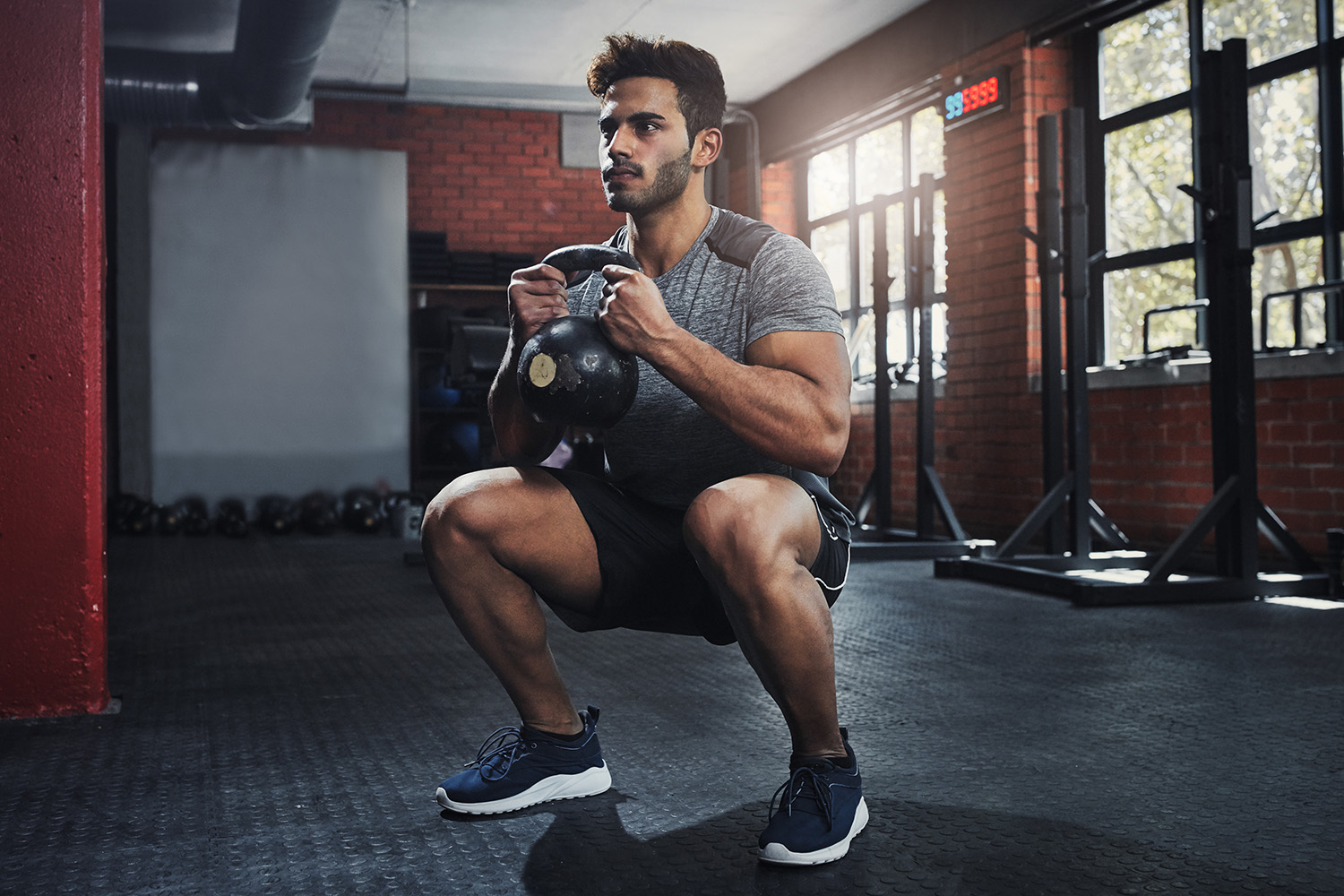
Most people are familiar with a traditional squat. The goblet squat is a fun-sounding variation of the traditional squat that also boosts your lower body strength and targets your glutes, hamstrings, core, shoulders, and more. An effective warm-up and training exercise, all you need for the goblet squat is a kettlebell or dumbbell. All types of squats can help you with your everyday functioning, such as picking something up off the ground or standing up from a low chair. Here’s everything you need to know about the goblet squat, how to perform it properly, the benefits, and beyond.
What is a goblet squat?

A goblet is a metal or glass bowl-shaped drinking cup that typically has a foot and cover. The goblet squat is a version of the traditional squat exercise that involves squatting while holding a kettlebell or dumbbell. The exercise got its name because you hold the weight in the same way you would hold a goblet. Plus, it sounds cool and maybe a little fancy. Perhaps it conjures up thoughts of Harry Potter or Indiana Jones.
While there are similarities, the goblet squat and back squat are two different exercises. With the goblet squat, you hold the weight in front of you with both hands as you squat down. With the back squat, a bar is racked on your back, and you carefully squat down with the bar.
What are the benefits of a goblet squat?

People often make mistakes performing squats that have been proven to increase the risk of lower back or knee injuries. Performing the goblet squat is one of the best ways to perfect your squat form, which further enhances your balance and strength and lowers your risk of injuries.
You hold the kettlebell in front of you, which engages your quads a little more than other squat variations like the back squat. Holding the weight in front of you also prompts you to keep your torso tall, your core engaged, and your body balanced to prevent being pulled forward by the weight.
Jump higher

A fascinating study revealed that performing squats with increased load, like holding a kettlebell for the goblet squat, enhanced jumping capabilities. Your quads and glutes play a big role in how effectively you can jump, and the goblet squat targets these muscles.
What muscles does the goblet squat work?

The goblet squat works your whole body, and especially your core, legs, glutes, and all major muscles of your lower body. It allows you to move through a full range of motion and adds resistance to the traditional squat.
How to perform a goblet squat
All you need is a kettlebell or dumbbell and sufficient space to stand and move comfortably.
How to perform a goblet squat:
- Stand with your feet a little wider than hip-width apart.
- Angle your toes slightly outward.
- Use both hands to grip the handles of the kettlebell as if you were a King cupping a goblet.
- With your elbows bent, position the kettlebell in the middle of your chest.
- Keep your core engaged and your spine neutral, and focus straight ahead.
- Bend your knees to dip down into the squat, making sure to keep the kettlebell close to your body.
- Ideally, you want your hips to be parallel with your knees.
- At the lowest point of your goblet squat, your elbows should touch the inside of your knees.
- Press down with the heels of your feet and lift yourself back up to the starting position.
- Repeat for your desired number of repetitions.
Variations and proper form

Using heavier weights makes the goblet squat more challenging. You should always start with a lighter weight that you’re more comfortable with and work your way up. Some people with lower back issues might find the goblet squat to be more manageable than other squat variations like a back squat that exerts more pressure on your back.
Here are some top tips for perfecting your goblet squat form:
- Try to avoid holding the weight too far away from your body and leaning too far forward.
- Try to avoid caving your knees too far inwards or coming up on your toes.
- Try to keep your weight more evenly distributed across your feet or a little more weighted on your heels.
At the lowest point of the goblet squat exercise, the goal is to get your elbows to touch the insides of your knees for proper knee alignment. Ideally, your knees should track in line with your toes. Improper knee alignment and allowing your knees to cave inward increases your risk of knee injury.
If you’re trying to work on perfecting your goblet squat form, it’s best to start at a slower pace and focus on form over momentum.



